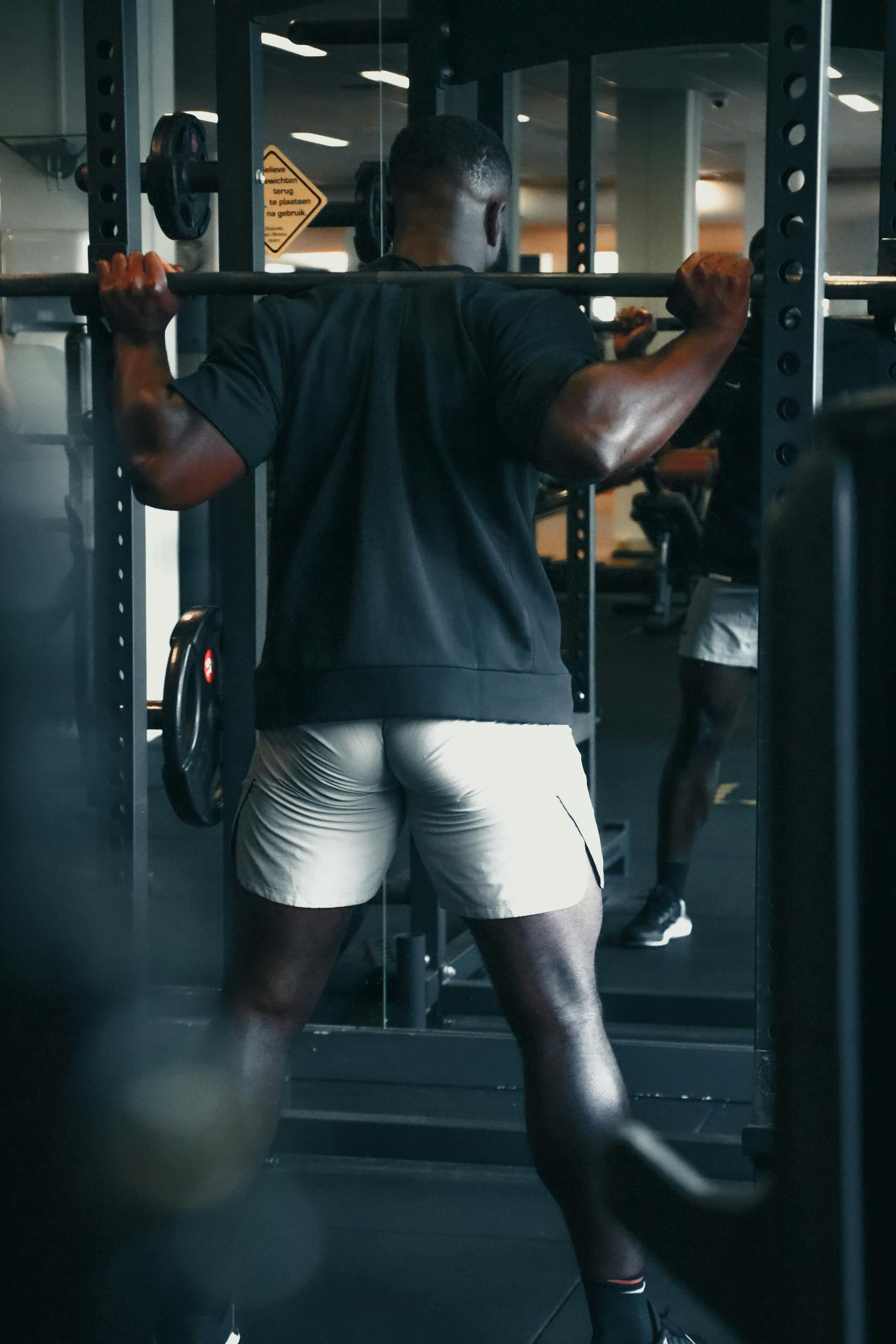Sometimes, it takes being in a situation yourself to realise the importance of taking preventative measures to ensure you don't wind up in the same position again. However, when it comes to insurance, you’re not going to want to find things out for yourself even the first time around.
Close your eyes and imagine a client you’re working with suffers an injury during a perfectly executed training session. No matter how vigilant you are, your expertise and careful guidance, accidents remain unpredictable. It’s unlikely that over the course of your personal training career, you’ll go through things unscathed, and without proper insurance protection, such incidents could impact your career and financial stability.
By getting things right from the outset under the shield of personal training insurance, you’ll be able to place your focus where it matters most. You’ll be able to get right back to helping your clients achieve their goals once you’ve picked up the right coverage, ensuring you’ve got your business protected and peace of mind.
Key Takeaways
- Protectivity is a trusted option among personal trainers.
- CompareInsurance.ie is a reputable insurance provider.
- REPs Ireland's partner insurance provider is held in high regard for their personal trainer coverage.
- Make sure to carry out six-monthly coverage reviews.
- Gather all the necessary details and communicate promptly for smooth resolution paths.

Why a Personal Trainer Absolutely Needs Insurance
For those with a passion for fitness and helping others achieve a happier and healthier version of themselves, there’s no avenue as rewarding as becoming a personal trainer.
Today's fitness landscape shows that 62% of personal trainers choose the self-employed route, drawn by schedule flexibility and higher earning potential.
This independence brings additional responsibilities, particularly around insurance arrangements and business management. Once you’ve managed to get set up and have a few clients under your belt, you’re going to want to do all you can to protect the lifestyle you’ve worked for. In short, simple sports skills are not enough to become a fitness professional!
For those with a passion for fitness and helping others achieve a happier and healthier version of themselves, there’s no avenue as rewarding as becoming a personal trainer. Today's fitness landscape shows 62% of personal trainers choosing the self-employed route, drawn by schedule flexibility and higher earning potential. This independence brings additional responsibilities, particularly around insurance arrangements and business management. Once you’ve managed to get set up and have a few clients under your belt, you’re going to want to do all you can to protect the lifestyle you’ve worked for.

It’s important that you begin protecting yourself from the moment you get set up working as a personal trainer. If you’re stepping into self-employment, then you’ll need to tick a number of boxes, which will take some careful preparation. For starters, things like tax registration and meticulous financial record-keeping are going to become your responsibility. Your choice of business structure shapes both liability exposure and financial commitments. While sole trading offers quick market entry, limited company status provides stronger asset protection and enhanced growth opportunities.
Another area that you’ll want to adjust your lens to consider is financial risk assessment. This is because professional indemnity and public liability protection form the cornerstone of comprehensive insurance coverage. This is something that you’ll need to tune into, particularly if you’re going down the road of becoming a self-employed trainer, as you’ll lack employer-provided protection. Smart financial planning anticipates various challenges - from client injuries to equipment issues and revenue fluctuations.
Smart risk management demands thorough insurance coverage. This is why self-employed trainers need personal packages covering multiple training environments. Even gym-employed trainers benefit from additional coverage, protecting against potential gaps in employer policies. Whatever path you decide to take as a personal trainer, you’ll need to consider the risk exposure and earning potential of your decision. Established gym environments typically present lower financial risks compared to independent studios. Many successful trainers start their journey as contracted gym professionals, building their client base and business expertise in a more protected setting. Foresight is undeniably one of the great qualities of a personal trainer...
What are the Different Types of Insurance to Get?
Faced with the inherent risks of working as a fitness coach, many insurance companies offer protection for personal trainers in Ireland. You can obtain insurance quotes online or by contacting an insurance agency to speak with an insurance broker or agent. Among the current options:
- Protectivity
- CompareInsurance.ie
- REPs Ireland partner insurance provider
These companies offer various types of insurance policies essential for personal trainers. They provide coverage to ensure your business and sports activities are performed safely and smartly, whether they involve weight loss, muscle gain, cardio fitness, learning a new sport, or toning exercises.

First, there is "Public liability insurance" or general liability insurance.
This doesn't directly concern the fitness instructor and client performing physical activities themselves but covers you against incidents or property damage caused by third parties.
For example, if someone other than your client trips over the equipment, you've placed it on the ground, or if you or a client accidentally breaks a window when putting away sports equipment.
This type of insurance is especially helpful if you conduct sessions in a fitness club or gym, as it covers you and the client if you damage any property while there.
Next, there is the highly important and essential "Professional liability insurance" or professional indemnity insurance. This covers the personal trainer if, during physical exercise, a sports program, or bodybuilding, the client is injured. It also covers any advice you give to the client that they may implement during their own time.
This vital protection steps in when clients face health challenges or struggle with expected outcomes from your guidance. If they are injured following any advice you've given in a professional capacity, the insurance will take care of any bodily injuries. While not legally required, this insurance is crucial to protect yourself and your business against mistakes, accidents, and costly losses.
When a sports teacher approaches new students to boost their business and add to their clientele, being the good marketer they are, they will need to brag about their services: their ability to achieve this or that result, a unique method, suitable and safe equipment, no risk of injury, references, training... the list is long!
There is also "Equipment cover insurance", which covers any damages incurred to the expensive equipment you use with your clients in your professional classes or individual sessions. Finally, of course, the physical trainer is never immune from injuring themselves during a session. Complementary health insurance seems inevitable to cover the expenses occasioned by this type of accident. "Personal accident insurance" covers you for any injuries you might have while performing your personal training activities.

Insurance Renewal Considerations
Keeping your wits about you and doing your due research when it comes to insurance management will go a long way in safeguarding your training business long into the future.
You can start by considering the benefits of your desired plan, such as REPs Ireland membership.
This option unlocks valuable benefits like comprehensive coverage, including Professional Indemnity, Malpractice, and Public Liability Insurance at just €105 annually.
Remember, these competitive rates require active REPs Ireland membership status, but if nothing else, it gives you a sense of the benefits you should be looking for!

Managing Your Insurance Timeline is also something that demands careful attention as a personal trainer. The main thing you’ll want to keep in mind is that policy renewals typically process within 48 hours on weekdays, though weekend submissions may take longer. So, make sure to start your renewal journey well before expiration to maintain uninterrupted coverage.
As your business grows, so too will your insurance needs. This is why professional best practices recommend six-monthly coverage reviews. Track your business changes meticulously - new services, equipment additions, or operational shifts could reshape your coverage requirements. A good way to think about your insurance renewal is just like a health check for your business. Now, discover what qualifications you need to become a personal trainer...
Client Safety and Insurance Claims
Safety excellence starts with understanding common training risks. Musculoskeletal injuries lead the list of training session incidents, followed by heat exhaustion and cardiovascular emergencies. Your expertise in recognizing these potential challenges strengthens your protective approach.
Successful insurance claims demand methodical handling. Start by verifying all claim details - gather comprehensive documentation, from incident reports to medical records. Quick insurance provider notification and transparent communication create smooth resolution paths. While your public liability insurance offers protection, detailed documentation remains your strongest ally.

Prevention stands as your most powerful safety tool. Thoughtful warm-up routines and careful risk assessments set the foundation for safe sessions. Focus on proper form and technique helps shield clients from common workout-related injuries. Personalized training programs respect individual capabilities and health backgrounds, supported by consistent evaluation throughout their fitness journey.
Sharp observation skills become your safety superpower. Reading non-verbal cues and subtle signs during sessions helps prevent potential issues. Exercise modifications show your commitment to client wellbeing. Though insurance protection matters, your dedication to safety measures creates the strongest shield. Remember - safe training environments help clients thrive while protecting your business's future.
Navigating the Insurance Landscape as a Personal Trainer
After your reading, you should find yourself with a concrete understanding of the appropriate next steps you can take in order to protect the career you've created for yourself as a personal trainer. The insurance landscape can seem daunting, particularly when you don't know what to look for or where to look for coverage. With the above consideration in mind, you'll be able to find a plan that caters to your business and the clients you work with. That way, any hiccups that you inevitably encounter along the way, won't threaten the success of the business you've worked so hard to build.
On the Superprof website and among sports coaches in general, you can find all kinds of teachers and coaches from vastly different backgrounds who train and coach sports and physical activities. Among them, there is the Physical Education Teacher, or gym teacher, who practices in a middle or upper (secondary) school. These days, many of them no longer hesitate to find a supplementary salary by doing in-home sports coaching. It is indeed very practical. When you're punching your numbers and making forecasts for your earning potential, consider how much a personal trainer's salary is through various avenues.
Once you've got the protection you need to run your personal training business, your only remaining concern will be how much you're earning and getting those clients! There's really no cap on the sort of training you can implement with your clients. This degree of freedom makes it attractive to fitness enthusiasts like yourself. If you're looking for new clients, just head over to Supeprof and set up a profile as a tutor, and have those in search of a personal trainer flock to you!











